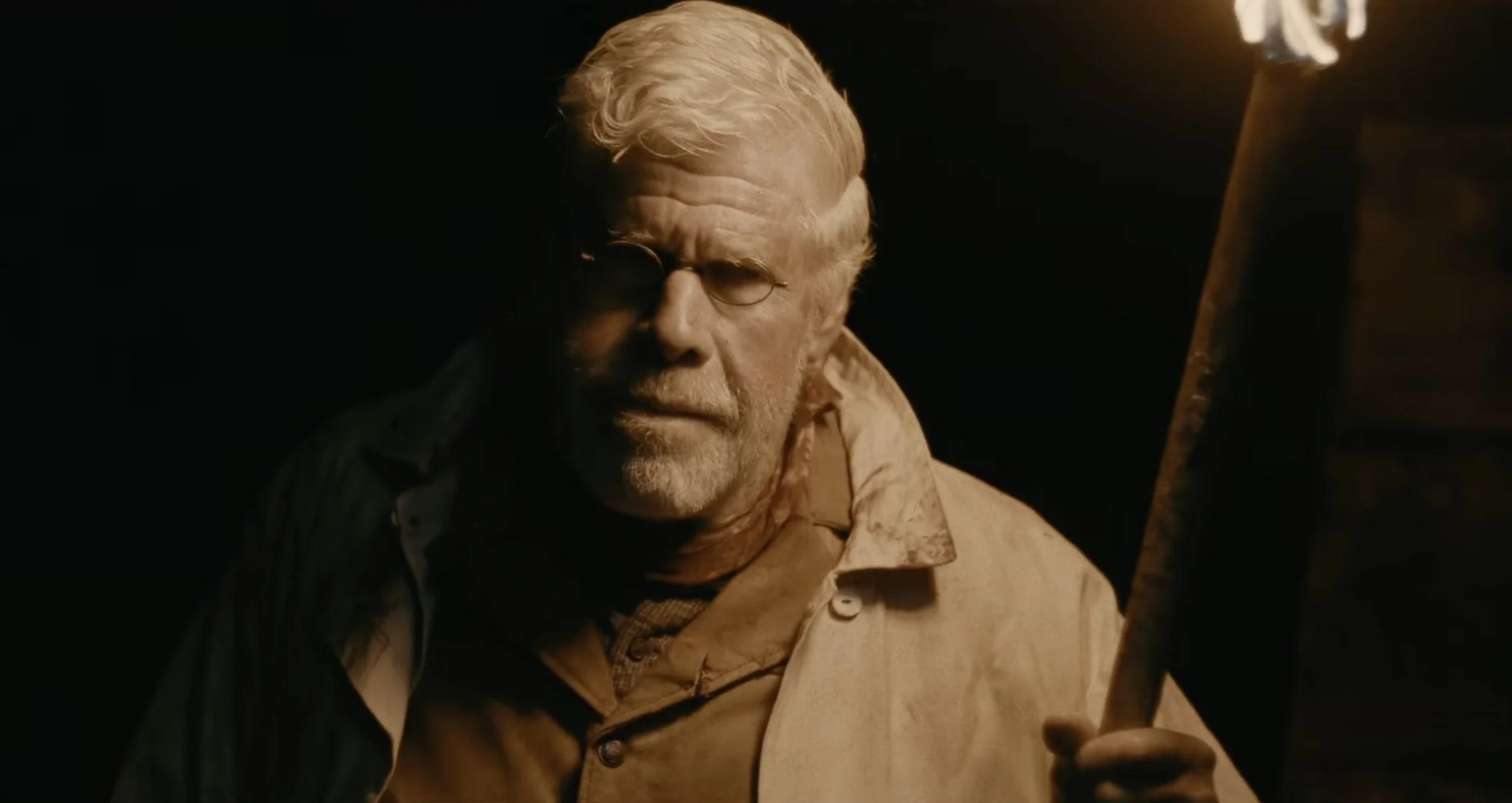Over the past two months, Devir Games has launched the rock and roll themed board game Hard Rock 1977The game was designed by Jackie’s Fox who knows a thing or two about being a rock star in the 70s as the bassist for The Runaways. You and up to four of your friends take on the roles of various rock stars trying to make it to the big leagues. Devir Games was kind enough to provide me with a copy of the game to review, but all thoughts below are my own.
It’s 1977. You’re an up-and-coming musician, dreaming of making it big with your band. Over the next few months, you’ll be rehearsing, playing live, writing songs, and promoting your band. With careful planning and a little luck, you’ll achieve maximum fame and become the best new artist of the year.
When I learned about Hard Rock 1977I was excited. I’ve always been drawn to music-related games, especially rock, so of course I had to try this even though I’m more of a 90’s and 00’s rock fan. Some of the attention to detail was really nice. The player boards are designed to look like a combo amp with knobs to indicate stats, and the max stat is 11. You start out with a job to make ends meet until you become a pretty big deal in the music industry. Stuff like that is always a plus in my book.
Game modes for Hard Rock 1977 It’s very similar to a worker placement game that a friend pointed out was similar to Lords of Waterdeep. During each round (max 9), there are three phases: Day, Night, and Evening. Each phase has unique locations to visit with different effects such as increasing stats, getting a record deal, playing live, or just hanging out backstage. There are also open locations during each phase. During Evening, your location will determine your turn order for the next round. The game ends after round nine or at the end of a round in which at least one player has 50 or more Fame (victory points).
Typically, each player can perform one action during a phase, but there is a tool in Hard Rock 1977 that helps you in times of need: Candy. Candy represents all the various vices that rock stars are known for, which gives them a potential increase in the number of actions you can take (up to two extra actions). The catch is that every time you consume Candy, your Craving stat increases and you must roll a die. If the die roll is equal to or higher than your Craving stat, nothing happens. If the roll is lower, then you have Low Blood Sugar and must spend your next Day phase in the Recover space, which simply lowers your Craving by one.
This adds a level of risk vs reward that can help you catch up or even surpass other rock stars. You also need to be careful about planning your turn with Candy as some spaces limit what Candy can do. For example, you can’t use Candy to play multiple Gigs during the Night phase. Luckily those spaces have a clear icon indicating that Candy’s effects are limited in some way. I actually really like the Candy system and I don’t even hate the fact that you can waste Candy by flipping the Sugar Free card which results in zero extra actions.
Before I continue talking about the various aspects that I like about Hard Rock 1977I want to talk about the issues I have with it. My biggest complaint is one that still baffles me. There is literally no insert in the box to organize the game components. There are little plastic sleeves to help with the smaller components and paper rubber bands (which broke easily and had to be replaced with rubber bands) for things like money and cards, but it just feels incomplete and unfinished. I often talk in reviews about how inserts can really make a difference to a game and not having one is a huge fail in my opinion.
One big gameplay issue we encountered while playing was the imbalance of jobs. There are a total of 11 different jobs. Each of them indicates at which stage a player can go to work, how much money they earn, and the special abilities for the job. Only two jobs have special abilities which are both very good. The Truck Driver not only gets paid $2 (the average pay) but also has no risk of getting fired for not using Go To Work (other jobs fire you if you don’t do it three times). Meanwhile, the Sound Engineer also gets $2 and if he records a demo, he gets paid $1 less and doesn’t lose his job. Wow, that’s really cool! Some other jobs only give you a flat $2, some make you roll to see how much you earn between $1 and $3, and then you get a job that shouldn’t exist: Wait Person. While I understand thematically why it works this way, it’s just really awful. You roll a die with a ⅓ chance of getting $2, ⅔ chance of getting $3 (the highest number in the game), and ⅓ chance of losing $2! The idea is that a customer screws you over and you have a slightly higher chance of getting $3 than other jobs, but it feels SO BAD when you roll a six and have to pay $2! If you are late, this makes it seem almost impossible to catch up. In the mid-late game, this doesn’t matter because you will have other means of income and can do without your job, but as in many other worker placement/resource management games, the start of the game can have a huge impact on the final score. There are a few ways you could try to resolve this card, but it really boils down to the fact that jobs in general need better balance and probably more with special abilities. Honestly, I would probably recommend talking to your group about removing the Wait Person and possibly the Truck Driver and Sound Engineer from the game before playing with things as they currently are.
Another problem my groups have encountered is with Hire Crew spaces. In Hard Rock 1977colored icons help indicate things. If an icon is red, that is the cost to perform the action. If it is blue, then it is a requirement to perform the action. If it is black, then it is the reward for performing the action. This gets a little confusing on Hire Crew because there are multiple slots for that space with different costs for the same results. Some of my groups have had difficulty with the different slots and purchase levels because you can purchase up to three crew members with each costing more, but you can also only purchase one in a round.
Additionally, the character abilities seem inconsistently written. This isn’t a major gameplay issue, but it does contribute to the feeling of unpolishedness. Five of the characters have special ability tokens that you typically remove to indicate that you’ve used the ability. For Eric Fairchild and Doc Sapphire, these tokens make a lot of sense. You could even make a case for Rafael Santiago. However, it does seem odd to me that Yolanda Delacroix and Shere Darling use these tokens but other once-per-round abilities like Kimmy Kim or Bebe Rose don’t have these tokens. Either all once-per-round abilities should have a token, or they shouldn’t. It also bothers me that while Yolanda and Shere’s effects are extremely similar, the syntax is different. I wish it was more uniform and even extended to characters like Bebe Rose.
Finally, the smallest complaint I have is that not all amp board knobs are created equal. Some of them are extremely hard to turn and we found ourselves actively checking to avoid them when starting a game. That being said, some sort of grip on all the knobs would go a long way toward making this a non-issue. The smoothness makes this really difficult and it’s a detail that I feel has fallen on deaf ears since most, if not all, amp board knobs I’ve ever used have some level of grip or a protrusion that acts as a grip.
Despite all these negative aspects, there are definitely positive aspects. Hard Rock 1977. I’ve already mentioned some attention to detail, but what really gets me going is the money. It has a nice texture and each bill has different markings, like coffee stains, drawings, etc. It might be my favorite detail in the game.
Another plus is that the game is well-sized for different sized groups. One side of the board is for 2-3 players and the other for 4-5. Additionally, there is an “AI” player for use in 2-player games. I have enjoyed both the larger 4-player games and the smaller 2-player games.
Furthermore, while Hard Rock 1977 It has an unfinished look in many ways, the different pieces are of quality. The cards and money seem sturdy; the tokens, amplifiers, character boards and game board all look nice; and the acrylic stands seem nice and sturdy.
AND Hard Rock 1977 a perfect game? No. Is the gameplay fun? Aside from a few rough edges, yes. If you like worker placement games, you’ll probably enjoy it. Hard Rock 1977. The art is fun, the mechanics are solid, and I had fun playing it outside of the game where I was a Wait Person (seriously, it was a horrible game because of that job). I will definitely try this game in the future with friends. Unfortunately, the lack of an insert, the imbalance in the jobs, and the general feeling of some aspects being unpolished do affect the score.
by Tommy Williams
Source: Geek Tyrant
Lloyd Grunewald is an author at “The Fashion Vibes”. He is a talented writer who focuses on bringing the latest entertainment-related news to his readers. With a deep understanding of the entertainment industry and a passion for writing, Lloyd delivers engaging articles that keep his readers informed and entertained.





